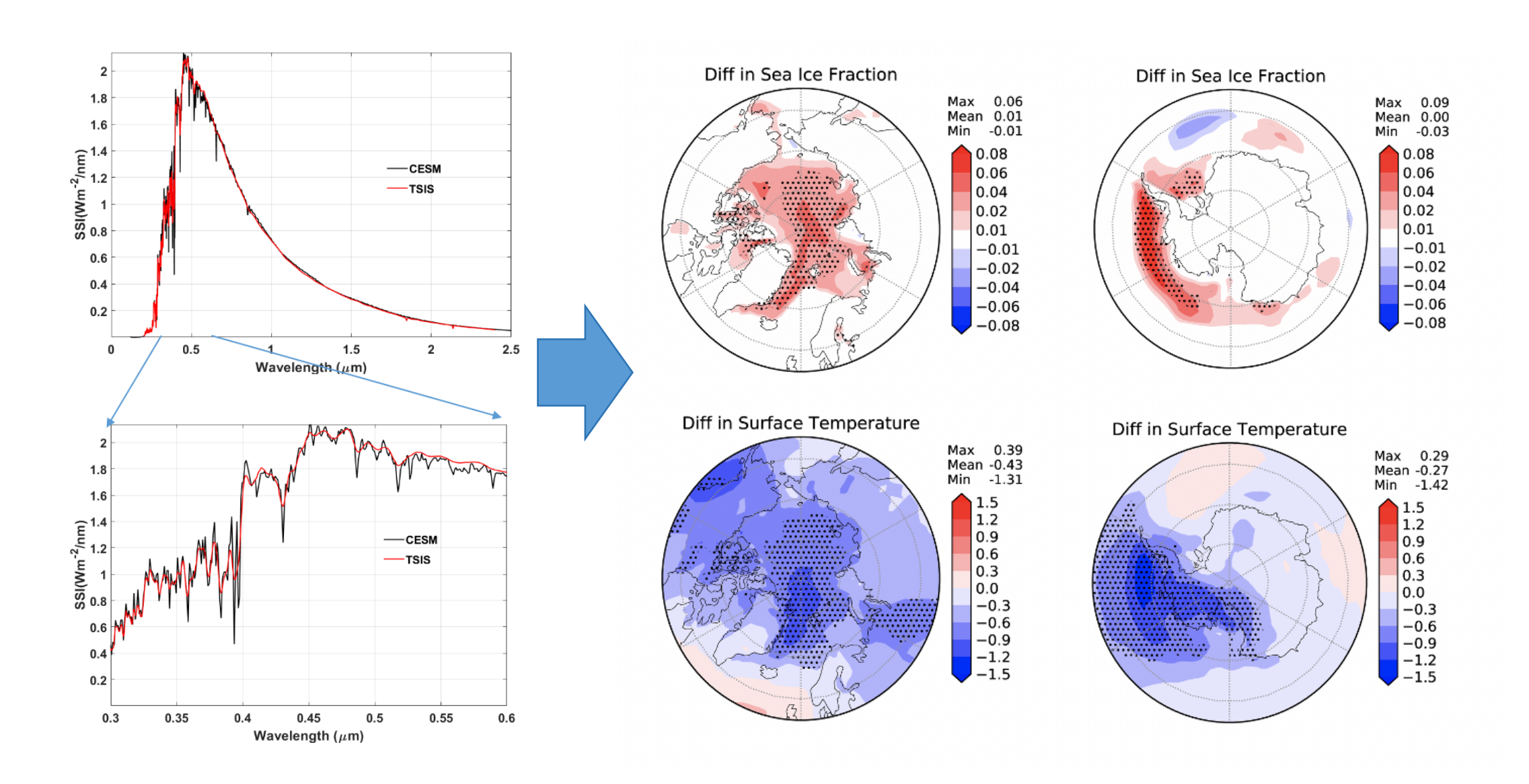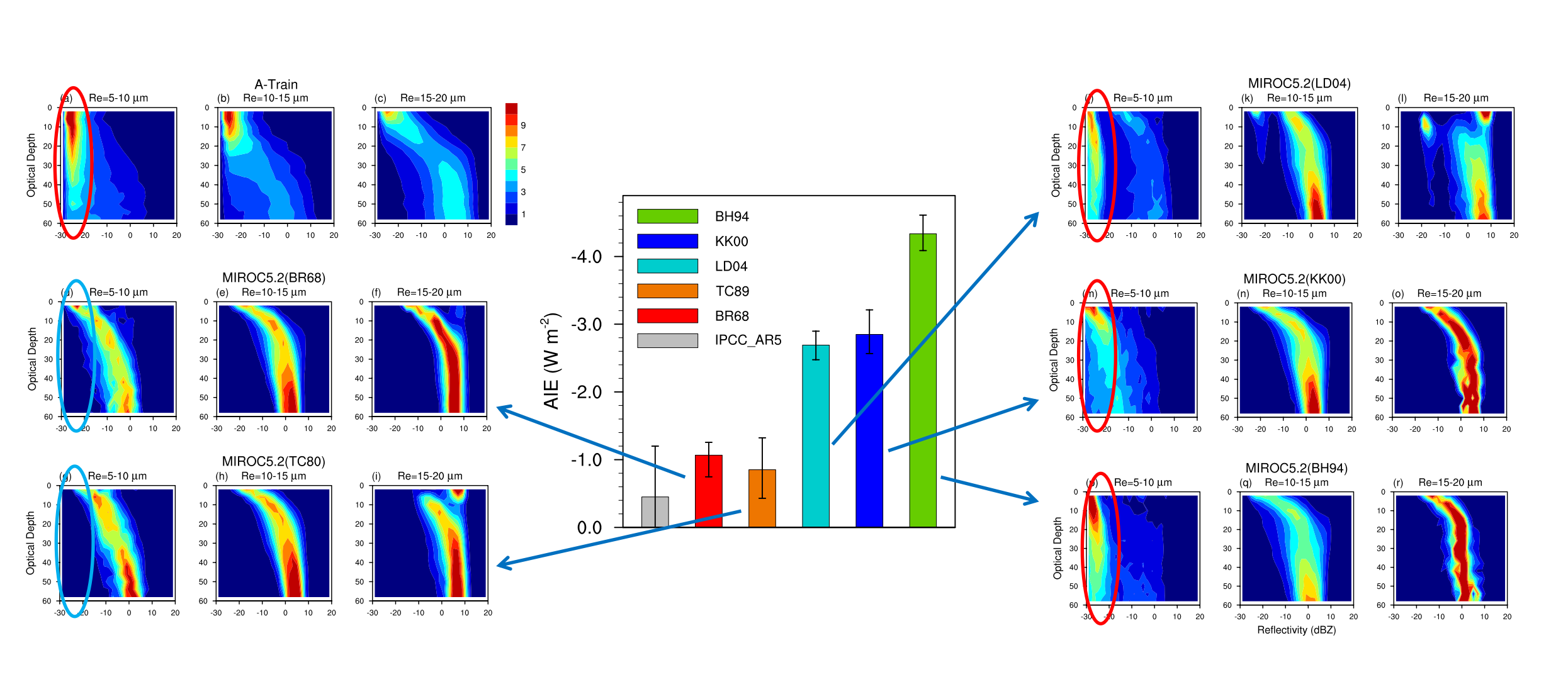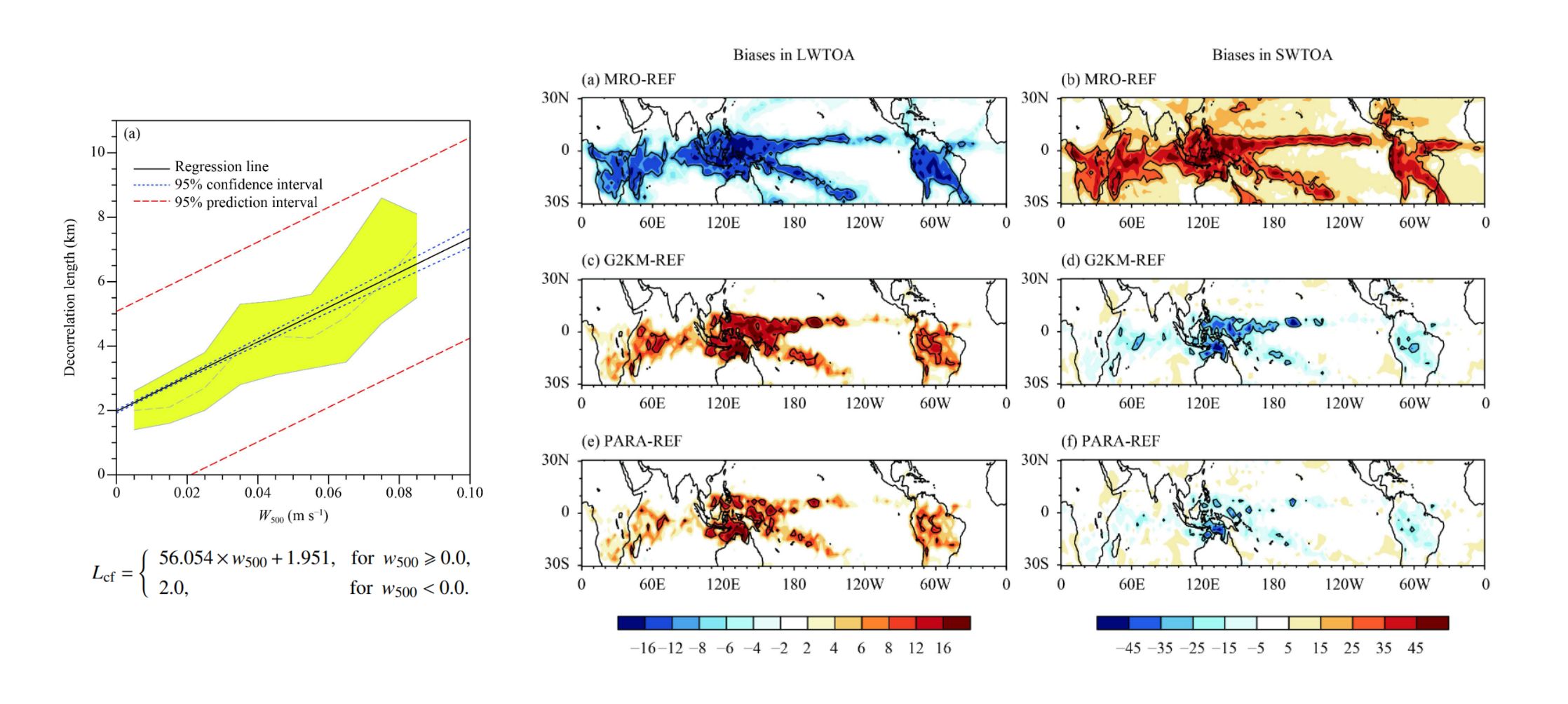Solar spectrum’s importance to climate modeling
Observed solar spectrum significantly affects polar climate projection.
Observed solar spectrum significantly affects polar climate projection.
Warm-rain microphysics is key to modelling future warming.
Associating cloud overlap with its dynamic environment improves radiation in GCMs.